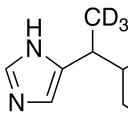Effects of inoculation with organic-phosphorus-mineralizing bacteria on soybean (Glycine max) growth and indigenous bacterial community diversity.
Słowa kluczowe
Abstrakcyjny
Three different organic-phosphorus-mineralizing bacteria (OPMB) strains were inoculated to soil planted with soybean (Glycine max), and their effects on soybean growth and indigenous bacterial community diversity were investigated. Inoculation with Pseudomonas fluorescens Z4-1 and Brevibacillus agri L7-1 increased organic phosphorus degradation by 22% and 30%, respectively, compared with the control at the mature stage. Strains P. fluorescens Z4-1 and B. agri L7-1 significantly improved the soil alkaline phosphatase activity, average well color development, and the soybean root activity. Terminal restriction fragment length polymorphism analysis demonstrated that P. fluorescens Z4-1 and B. agri L7-1 could persist in the soil at relative abundances of 2.0%-6.4% throughout soybean growth. Thus, P. fluorescens Z4-1 and B. agri L7-1 could potentially be used in organic-phosphorus-mineralizing biofertilizers. OPMB inoculation altered the genetic structure of the soil bacterial communities but had no apparent influence on the carbon source utilization profiles of the soil bacterial communities. Principal components analysis showed that the changes in the carbon source utilization profiles of bacterial community depended mainly on the plant growth stages rather than inoculation with OPMB. The results help to understand the evolution of the soil bacterial community after OPMB inoculation.



